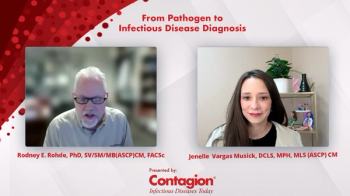The hospital transmission of toxin-producing Clostridioides difficile is a significant concern for infection control. This bacterium, which typically resides in the human intestines, presents a risk of spread, especially when patients are in close contact with healthcare staff. Additional culture tests and single nucleotide polymorphism (SNP) analysis through draft whole-genome sequencing (WGS) uncovered unnoticed transmission within the wards, particularly in cases of frequent room changes and repeated admissions. Employing WGS-based analysis to monitor C difficile transmission could be an effective strategy for managing infection control.
38 strains were identified and classified into 11 sequence types (STs). The most prevalent was ST81 (n = 11), followed by ST183 (n = 10) and ST17 (n = 7). SNP analysis revealed a cluster of strains indicative of suspected nosocomial transmission (SNT). Draft WGS identified five clusters, with 16 out of the 38 strains belonging to these groups.
According to investigators, “Implementing aggressive additional culture tests for C difficile and conducting retrospective WGS analysis of the isolated strains could be instrumental in detecting and monitoring the effectiveness of routine infection control measures.”
Main Takeaways
- Implementing WGS and SNP analysis significantly enhances the detection of C difficile transmission in hospitals.
- Frequent room changes and repeated admissions of patients increase the risk of C difficile transmission, necessitating careful patient management.
- The findings highlight the need for improved infection control measures, including aggressive culture testing and genomic analysis, to effectively monitor and manage CDI.
To explore the hospital transmission of C difficile at a single facility, the researchers examined the genetic relationships of the bacteria. This was accomplished through draft WGS and the analysis of SNPs in the core genome, along with data on patients’ hospital wards and room changes. The retrospective study included 38 strains, each collected from a different patient, between April 2014 and January 2015.
There were two clusters for ST81 (ST81-SNT-1 and ST81-SNT-2), two for ST183 (ST183-SNT-1 and ST183-SNT-2), and one for ST17 (ST17-SNT-1). The largest SNT cluster, ST183-SNT-1, encompassed five patients associated with Wards A, B, and K. The patient designated Pt08 changed rooms seven times in Ward B, making them the most frequent room changer. Patients Pt36 and Pt10, also located in Ward B, underwent multiple admissions and discharges during the study The investigators also noted that “patients isolated with ST183 were suggested to have higher risks for acquiring or transmitting C difficile, potentially due to frequent room changes.”
This study has three limitations, it is a single-center, retrospective study focused solely on observing nosocomial transmission of C diff, without collecting data on C difficile infection (CDI) or antimicrobial use, and lacking screening for asymptomatic patients in the same rooms as CDI patients. Also, it did not assess the impact of silent transmission on infection control or healthcare costs. Only the first strain isolated from each patient was analyzed, which may overlook the possibility of patients carrying multiple genetically distinct strains of C difficile.
To include, the CDC's use of WGS has improved the detection of small outbreaks and highlighted underreporting, similar to how this study uncovered unnoticed transmission within a hospital. After the CDC implemented WGS in 2018, investigators found that fitting a power law distribution to US foodborne disease outbreaks revealed significant under-detection and underreporting.2
During the period from 1998 to 2017, there were 788 fewer small outbreaks identified annually than expected based on this model. Although, with the introduction of WGS in 2018, the detection rate improved, resulting in 365 fewer small outbreaks identified annually than expected in 2018 and 2019.2
Both studies underscore the critical role of genomic methods in enhancing infection control and managing infections, emphasizing the need for innovative approaches in public health practices.
Reference
Miyazaki, T., Aoki, K., Maeda, T. et al. A molecular epidemiological and transmission analysis of Clostridioides difficile using draft whole-genome sequencing in a single hospital. BMC Infect Dis 24, 989 (2024) Accessed September 18, 2024. https://doi.org/10.1186/s12879-024-09841-9
Ford L, Self JL, Wong KK, et al. Power law for estimating underdetection of foodborne disease outbreaks, united states. Emerging Infectious Diseases. Published February 2024. Accessed September 18, 2024. doi:10.3201/eid3002.230342.























































































































































































































































































































